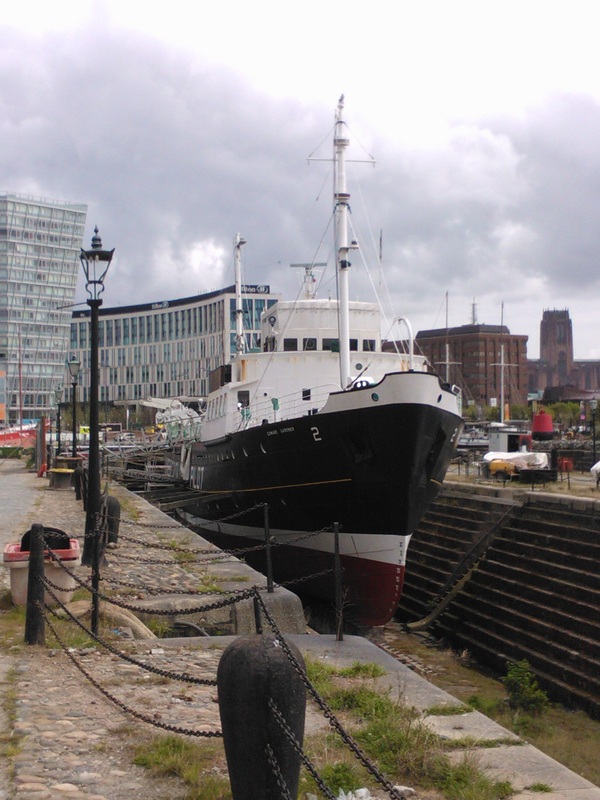The Mersey Docks and Harbour Board ordered her in July 1951 as the second of a new generation of large diesel-electric powered cutters to replace the pre-war steam cutters. She was launched 9 July 1953 and handed over 2 December 1953. Built of riveted steel and powered by two six cylinder single acting 640bhp National diesel engines with a single screw she could make a speed of 14 knots.
She is 54.1m long, with a beam of 9.6m, draft of 4.4m and 701 GRT.
Total build cost including a number of extra items was approximatly £211,000. Most if not all of the vessels were designed by Graham & Woolnough of Liverpool and named after the Chairmen of the Board i.e. Sir Thomas Brocklebank, Edmund Gardner, Arnet Robinson and William M Clarke. Their role was to provide a pilot service to guide the steady stream of ships entering and leaving the Mersey and as such they could accommodate up to 32 pilots and 11 apprentice pilots together with a regular crew.
Approaching the Port of Liverpool due to sand banks, shifting sands and strong
tides has since always been a hazardous undertaking. In 1689 the first official
chart of the Mersey was produced with a later version appearing in 1738.
Although charts made navigation easier, it was still precarious and local
fishermen often acted as unofficial pilots / guides for vessels.The first official Liverpool Pilot Service was established by the Liverpool Pilotage Act of 1766 and resulted in the compulsory presence of a pilot aboard all vessels in the Mersey. The 19th century witnessed the significant development of Liverpool as an international port and the pilots provided an essential service for ships both entering and leaving port as well as manoeuvring into and out of the docks.
The cutters worked on a rota of one week on station at the Mersey bar, one week on station off Point Lynas and one week serving as supply boat and tender to the boats on station. Edmund Gardner carried out these duties until 1981 when the two remaining large cutters were withdrawn from service and replaced by smaller high speed launches.
She was bought in 1982 by the Merseyside Maritime Museum and maintained afloat in Princes Dock, Liverpool being moved to her current location in Canning Graving Dock Number 1 in 1984.

 RSS Feed
RSS Feed
